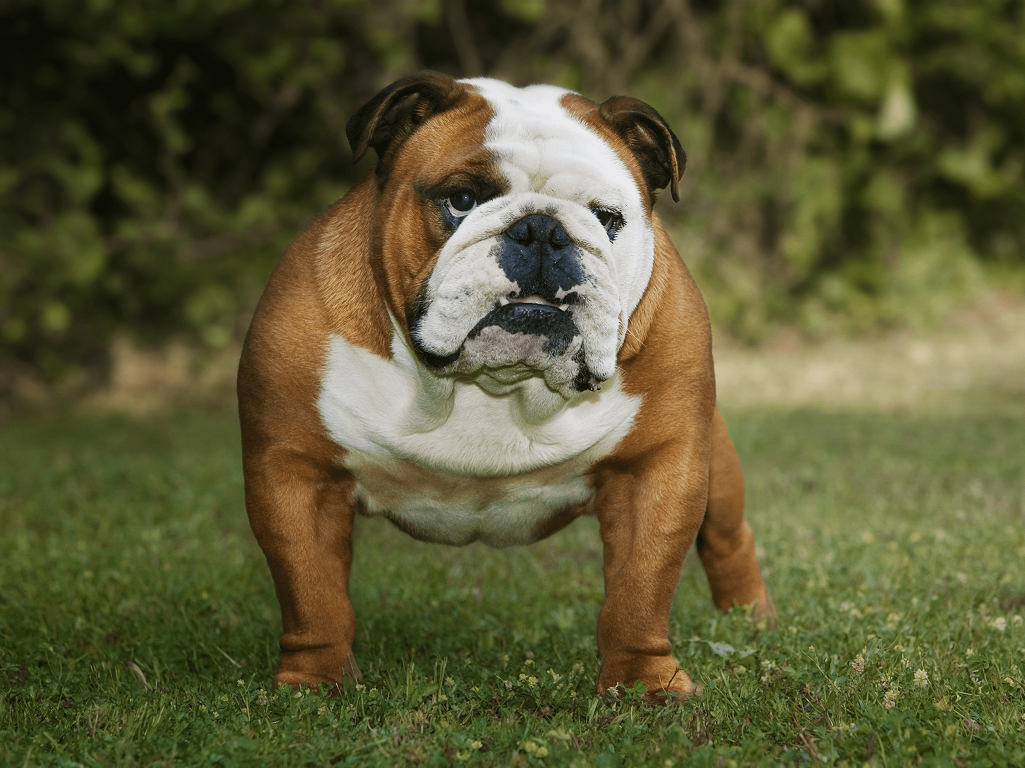With its low-slung, muscular body and distinctive wrinkled face sporting a unique pushed-in nose, you cannot mistake an English Bulldog for any other breed. Although its ancestors participated in blood sports like bullbaiting, today’s Bulldogs have long been removed from such past. The truth is, you will find it challenging to discover a family companion with a more loving disposition than the English Bulldog.
It is a people-oriented breed with a calm disposition that lets it be friendly and gentle with kids. If you are looking for a dog that requires low maintenance and can adapt to apartment living, this may be the one to consider.

Earliest reference to the term ‘Bulldog’ in a letter by an Englishman, Preswick Eaton.
English scientist Christopher Merret designated these dogs as Bear Bull or Butchers Bull because of their use in bull baiting
Bear and bull-baiting became prohibited in England, with the breeders starting to transform the breed into a mellow companion
Formation of The Bulldog Club Incorporated, the oldest bulldog specialty club, in England
English Bulldog gained recognition from the AKC
English Bulldogs will likely become overweight, so watch your dog’s daily calorie consumption. Whether you feed him home-prepared or commercially manufactured food, you should check with the veterinarian first. Royal Canin Breed Health Nutrition and Vital Paws for Bulldogs are excellent choices if you are going for commercial foods.
Your English Bulldog will happily relax next to you throughout the day. Still, he loves going on walks and indulging in short play sessions in the yard. You may allow your dog to paddle in shallow water, but make sure it’s never more than elbow-deep. Do not take your Bulldog out on hot days, as his short muzzle makes it difficult for him to breathe in humid weather.
Bulldogs have a short, straight, smooth coat, which you can keep clean by brushing twice or thrice a week with a soft-bristle brush. Comb his hair first with a rubber curry comb during periods of heavy shedding to keep the fur off your clothes, furniture, and floor. Clean his ears and trim the nails every two to three weeks.
As with most breeds, Bulldogs need early socialization to help them gain confidence and ensure a well-balanced life. Since your pet will be ready to chew on anything within its mouth’s range, it is necessary to teach him to release whatever is in his mouth on command. You may choose to enroll your Bulldog in puppy training classes, so he can learn to obey commands and get housetrained.